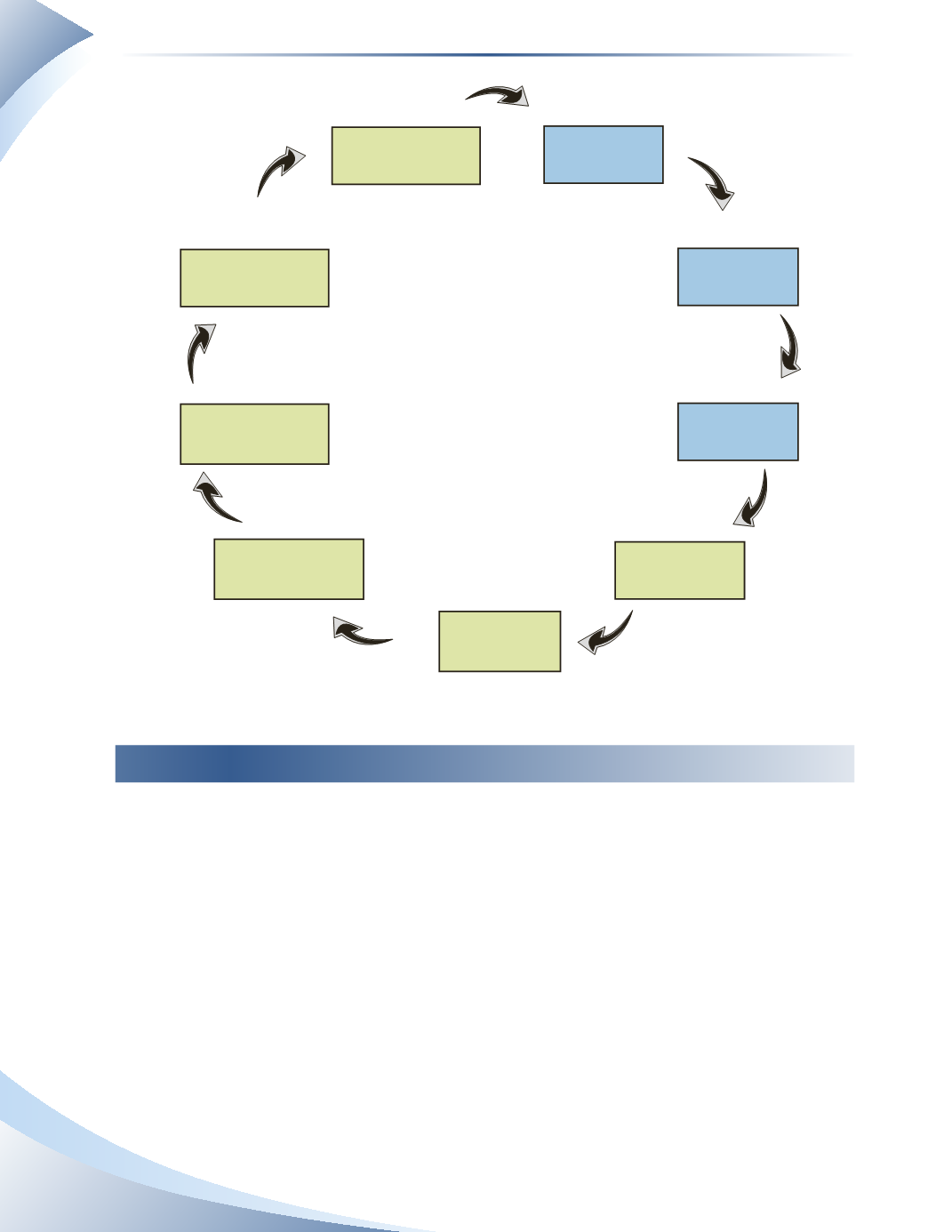
Chapter 4
The Accounting Cycle: Journals and Ledgers
82
Step 1
Step 2
Step 3
Step 4
Step 5
Step 6
Step 7
Step 8
Step 9
ACCOUNTING
CYCLE
Analyze
transactions
Journalize the
transactions
Post to ledger
accounts
Prepare the trial
balance
Journalize and
post adjusting
entries
Prepare the
adjusted trial
balance
Prepare the
financial
statements
Journalize and post
closing entries
Prepare the post-
closing trial balance
________________
figure 4.3
Analyze Transactions
The first part of the accounting cycle is to gather and analyze what must be recorded as trans-
actions. All transactions must have
source documents
or evidence that they actually happened.
Source documents can include sales receipts, bills, cheques, bank statements, etc.
As discussed earlier we must determine which accounts will be affected, what parts of the account-
ing equation the accounts belong to and identify whether these accounts will increase or decrease
as a result of this transaction. The extra step now is to match the increase or decrease of each ac-
count with a debit or credit entry to the account. Use the Debit and Credit Reference Guide in
Figure 4.1 to help with this.


